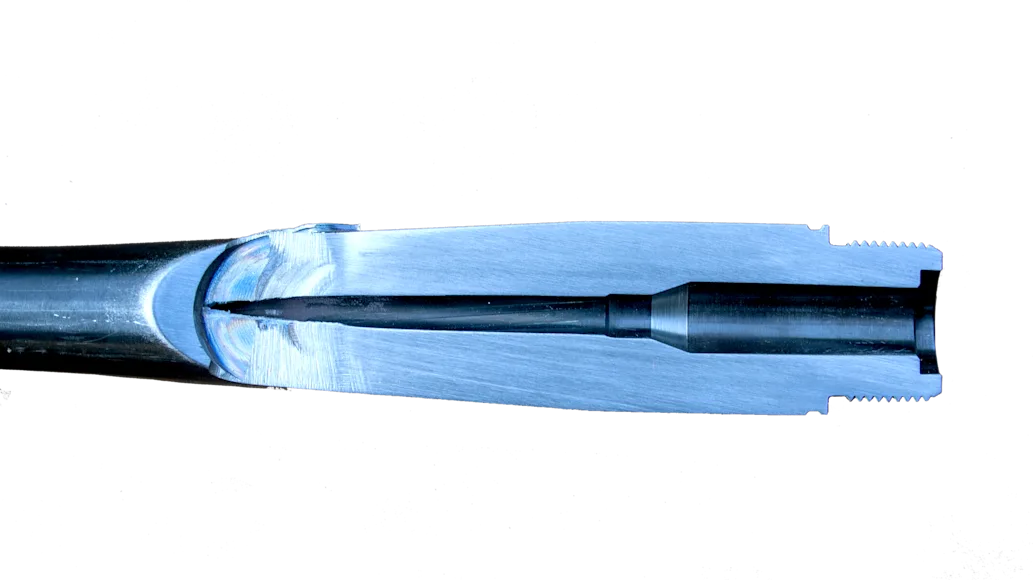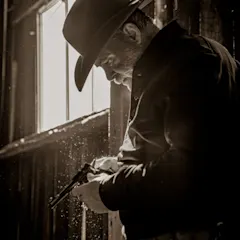_We may earn revenue from the products available on this page and participate in affiliate programs. Learn more ›
_
The word “caliber” is often incorrectly used in place of the word cartridge. There’s an easy-to-understand reason for this, and it originated during the mid-1700s as the early American long rifle developed. Those early rifles were—and still are—most notably distinguished by the internal diameter of their bores, which generally ranges from around 0.32 to 0.54 inch. This dimension is known as “caliber,” and because that’s how we originally referred to the ammunition/bullet a rifle fired, the tradition has continued for more than 250 years.
Today, the bullets we shoot in firearms are still dictated by the caliber of the firearm’s barrel, but caliber alone does not provide enough information. To make sure you use the correct ammunition, you need to know what cartridge the firearm is chambered for. At one time or another, we’ve all used the word “caliber” when we should have used “cartridge,” and while caliber and cartridge might have similarities, they’re not interchangeable. Caliber is a misnomer for cartridge, and it seems that half of everyone is confused about this.

Both the 308 Winchester and the 7.62x39mm are recognized as 0.30-caiber cartridges and are commonly listed with a 7.62mm description. But the 308 Winchester fires a 0.308-inch bullet Richard Mann
What’s the Standard
The Sporting Arms and Ammunition Manufacturer’s Institute, INC. (SAAMI) was established in 1926 to create and promulgate technical, performance, interchangeability, and safety standards for firearms, ammunition, and components. Their standards state, “Firearm and headstamp markings and other references to specific cartridges and chambers may utilize the full official name, or other approved abbreviated names, as listed in the SAAMI standards.” Their literature also states, “These full or abbreviated names should be used on cartridge headstamps and on firearm markings to properly identify the caliber.” Seriously? Even the governing body we all turn to for guidance seems confused and has apparently confused half the ammunition manufacturers. I looked at the online catalogs for 16 ammo makers, and eight listed their products by caliber, the other eight by cartridge.
Bore Diameter Matters
Part of the problem with using caliber to distinguish a cartridge is that the numbers in cartridge names—the supposed caliber reference—are inconsistent. To further complicate things, each rifled barrel arguably has two calibers. Let’s look at the 7mm Mauser which was designed by Germans who are known for their preciseness. According to SAAAMI, a 7mm Mauser rifle should have a bore diameter of 7mm/0.275-inch. That references the size hole that is bored in the barrel, and it’s why the cartridge is also known as the 275 Rigby. However, the proper bullet diameter is 0.284 or 7.21mm. How in the hell are you supposed to shoot a 7.21mm bullet down a barrel with a 7mm hole in it? It works because when a barrel is rifled, a second diameter known as the groove-to-groove diameter is created. According to SAAMI, the groove-to-groove diameter for the 7mm Mauser should be 0.283-caliber. So, do the numbers in cartridge names reference bore diameter? Nope, not always.

With some cartridges, the bore diameter or groove-to-groove diameter influences the cartridge’s name. With others, marketing dictates what a cartridge is called. Richard Mann
Bullet Diameter Matters Too
The 308 Winchester is often referenced as the 7.62x51mm NATO. But a 0.308-caliber bullet measures 7.82mm in diameter. The 0.308 reference is to the groove-to-groove and bullet diameter of the 308 Winchester, but the 7.62 references the 0.300-caliber bore diameter. You’d think this would all also translate over to the 7.62x39mm Russian, which also has a 0.300/7.62mm bore. But that cartridge has a 0.310 groove diameter and is loaded with 0.311-caliber bullets. Also, the 250 Savage and the 257 Roberts both fire bullets that measure 0.257-inch in diameter, but the 250 Savage’s name comes from its bore diameter of 0.250-inch, and the 257 Robert’s name comes from 0.257-inch diameter of the bullets it fires. The SAAMI specified groove diameter for the 257 Roberts is 0.256-inch, which believe it or not, equals 6.5 millimeters. Clear as mud, right?
Marketing Might Matter Most
It gets worse. The 44 Remington Magnum cartridge is loaded with a 0.429-caliber bullet, and a 44 Remington Magnum revolver has a bore diameter of 0.417-inch. Neither has a damn thing to do with 0.44 caliber. But, because of the legacy of 44 cap-and-ball and 44-40 revolvers, Remington knew “44 Magnum” would resonate with customers better than 429 Magnum. Remington also just launched the 360 Buckhammer
, which fires a 0.358-caliber bullet, just like the 35 Remington, the 358 Winchester, and the 35 Whelen. So why the “360” name? Marketing; 360 is bigger than 35 or 358.
Gun Writers and Editors
All this is also additionally somewhat complicated by gun writers and gun magazine editors. Most insist that the numbers preceding cartridge names include a decimal point to reference the “caliber” of the cartridge. This suggests that these precisely illustrated numbers are informative of exactness. They’re not. Just try to buy some 0.360-caliber bullets for your 360 Buckhammer or some 0.250-caliber bullets for your 250 Savage. Not gonna happen.
When it comes to ammunition, SAAMI understands this, and it’s why their accepted names and abbreviations for cartridges do not include caliber-identifying decimal points prior to the numbers in cartridge names. Why? Because they’re proper names, not measurements. Major ammunition manufacturers are members of SAAMI and comply with SAAMI standards. It’s why when you purchase a box of 223 Remington ammunition, the box reads “223 Remington” not “.223 Remington” with a decimal point. On Remington’s website, they list their ammunition products without the decimal point, but by caliber instead of cartridge. Go figure.

How confusing can we make it? The 6.5 Creedmoor uses a 0.264-caliber bullet, which equals 6.70mm. However, this box of 0.264-caliber bullets also states they are 6.5mm cal. Richard Mann
Communicating the Facts
When you ask your buddy what “caliber” his new rifle is, and when he tells you “270,” he understood what you were asking, and you understood he meant 270 Winchester. Yes, it could have been a 270 Weatherby, but if a guy has a Weatherby anything he’s damn sure going to tell you. So, if we’re not having problems communicating about what cartridges our rifles are chambered for, why does any of this matter?
**Read Next: Caliber Definition: It’s Not as Simple as You Think?
**
Well, partly because not all of us understand that the numbers in cartridge names are not exact representations, or that they sometimes do not reference bullet diameter. Some are also new to this shooting thing, and they need to be provided good, accurate information. And too, some of us just don’t like to pretend some words mean things they don’t. If you want to make believe your 6.5 Creedmoor rifle fires a bullet with a diameter of 6.5mm—it’s actually 6.7mm/0.264-inch—go ahead. Just don’t expect everyone to play along. Words matter—use the right ones.


